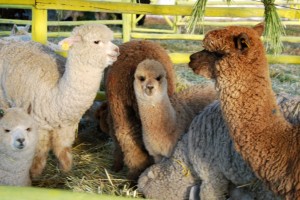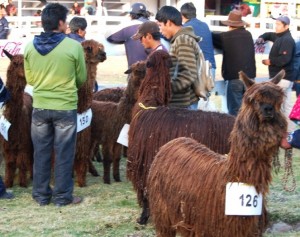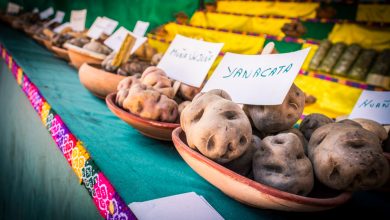Alpaca, a Story

Dark and juicy like beef, alpaca meat graces many plates in tourist restaurants in Cuzco and very few dishes in homes. A delicious meat, relatively low in fat and high in protein, alpaca has become a standard of the novo-Andean cuisine and yet it is not part of the ordinary repertoire of food in the city of Cuzco. In this is a story.
The alpaca is one of two domesticated relatives of the camel on which civilization was built in the Andes. The other is the much more well known llama.
The llama, which is larger, was the beast of burden that carried goods from one end to the other of the Andes, from the very high plateaus and valleys to the coasts. In contrast, the closely related alpaca produced fine wool from which elaborate textiles were created. It clothed the people of the highlands and served to keep their records.
The llama was the great sacrifice made by the Incas to the mountains, earth, and sun. Hundreds if not thousands of llamas were killed during the large festivals. But it was not only the Gods who fed on llama flesh. Ordinary people also ate llama and alpaca, although the animals were highly valued for other functions and not raised specifically for meat.
By the twentieth century, with the new animals brought by the Spanish, the llamas had retreated mostly to highland communities where they continued to be important as beasts of burden, and as food. The alpacas also continued to be a source of wool, although the European sheep increasingly challenged their primacy.


Nevertheless, with the entrance of the railroad into the highlands at the end of the nineteenth century the highland flocks of alpaca could have their wool exported to England for the production of fine cloth. A large industry developed which removed the alpaca from families and developed large estates that raised large herds of alpacas for their wool. This industry reached all the way to Cuzco.
As a result of the value of alpaca for wool, and the sense that other animals were poor people’s meat a taboo developed in Cuzco around consumption of alpaca flesh. Even today people will say that it is dangerous to eat alpaca; “it can make you sick” they will say.
Intriguingly the guinea pig, known as cuy, though also indigenous and the food of poor people became a symbolically important food in the city of Cuzco at the same time the alpaca languished. But no major market in guinea pig pelts existed that could give the animal a different value and remove it from the home.
In the sixties and seventies peru underwent a land reform and the large estates were removed from their powerful owners. Initially they were made into cooperatives but individual farmers also began to raise more and more alpaca. Though once called huaqcha–orphans — and seen as a threat to the large, commercial herds, these smaller flocks on the fringes of the large herds grew in importance. No longer were landlords able to reduce them and block their growth.

And, these small holders–generally called campesinos–increasingly became seen as the object of international non-governmental organizations and universities who worked to improve their farming and reduce poverty.
In the eighties an idea crossed the world to seek new markets for the products rural small farmers raised. If the new markets could sustain it, this could lead to badly needed cash flowing to rural pockets.
Alpaca meat was known by nutritionists to be unusually good meat, as is the meat of llamas. But alpacas were numerous, commercially valuable animals for whom a secondary meat market could probably be more easily developed than for the less concentrated llamas.
Planners and developers got to work to try to convince urban people to eat alpaca, despite stigma and taboos. Novo-Andean cuisine came to their rescue, as it sought to revalue Peru’s native products and develop their culinary value.
As a result, almost all the quality tourist restaurants offer alpaca on their menu. What once was known as a tough, dry, and strong tasting meat, is now tender and well-flavored.
Developers had to learn how to properly produce the meat so that its flavor would not be gamy but subtle and balanced as it now is. The quest was a success. Though Cuzqueños have yet to adopt the meat for their home meals, its strong success in tourist restaurants promises a commercial future for alpaca as a producer of fine wool and of quality meat.





